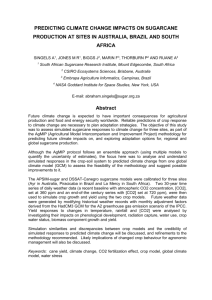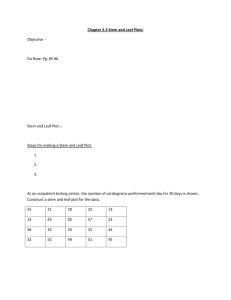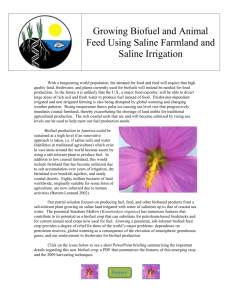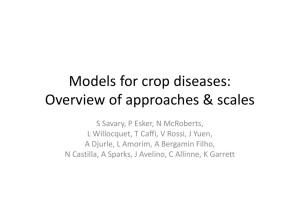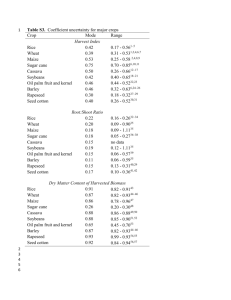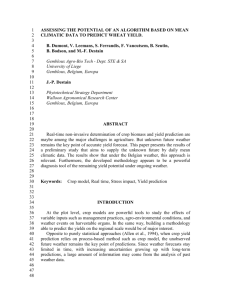your tasks
advertisement
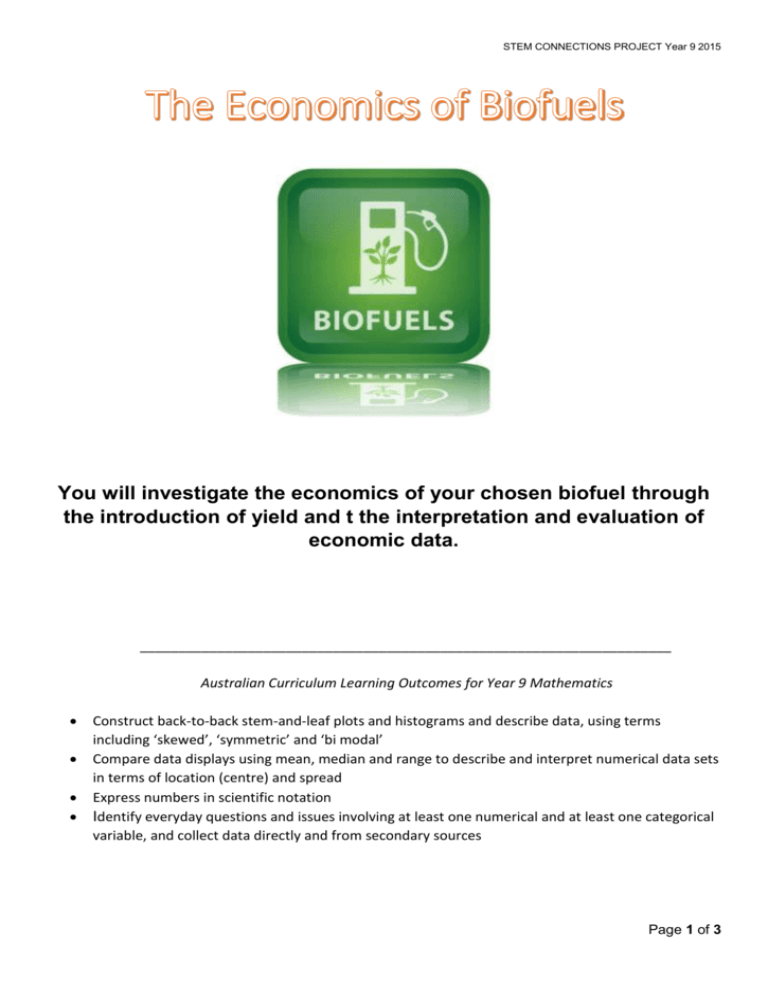
STEM CONNECTIONS PROJECT Year 9 2015 You will investigate the economics of your chosen biofuel through the introduction of yield and t the interpretation and evaluation of economic data. _____________________________________________________________________ Australian Curriculum Learning Outcomes for Year 9 Mathematics Construct back-to-back stem-and-leaf plots and histograms and describe data, using terms including ‘skewed’, ‘symmetric’ and ‘bi modal’ Compare data displays using mean, median and range to describe and interpret numerical data sets in terms of location (centre) and spread Express numbers in scientific notation Identify everyday questions and issues involving at least one numerical and at least one categorical variable, and collect data directly and from secondary sources Page 1 of 3 STEM CONNECTIONS PROJECT Year 9 2015 1. Based on the data provided here, construct a bar chart of at least 10 crop yields (Litres oil/ha). Discuss your results. 2. What is the difference between a bar chart and a histogram? Explain when you would represent data using a Bar chart and when you would represent data using a Histogram. 3. The above table shows biofuel yield for different crops and countries. Ignoring the crop type and country, create a back-to-back stem and leaf plot that compares the crop yield (Tonnes/ha) for Ethanol and Biodiesel. Hint – you will only use 2 of the columns. Start by finding the range of the crop yield (Tonnes/ha) and then work out an appropriate class interval. Then construct the back-to-back stem and leaf plot comparing Ethanol and Biodiesel. a. What is the median, mean and mode crop yield for both Ethanol and Biodiesel (Tonnes/ha)? Comment on your findings. b. Make a statement comparing the data sets in your back-to-back stem and leaf plot. Use appropriate mathematical terms such as ‘skewed’, ‘symmetric’ and ‘bi modal’. Comment on the reliability of your findings – for example look at the source, data quality and quantity. 4. Yield is often represented in tonnes/hectares. Hectare (symbol ha) is a unit of area equal to 10,000 square metres or, in scientific notation 104 m2. Scientific notation is used to represent very large and very small numbers. Complete the following questions: a. Write the following in Scientific Notation i. 92 017 000 Page 2 of 3 STEM CONNECTIONS PROJECT Year 9 2015 ii. 0.000 056 2 b. Write the value of i. 3.2 × 104 ii. 7.23 × 10-3 5. Research and state the yield of your Biofuel crop. Provide references. a. If you are using a waste stream state the cost per litre (or equivalent unit) of your waste to purchase and collect/transport for processing. Provide references. 6. Express your crop yield in scientific notation. 7. State all costs involved in producing/converting your Biofuel, example: water; fertiliser; food versus fuel; transport costs etc. Do you think this is an economically viable fuel source for your area – explain? 8. Research and summarise the economics that need to be considered for your chosen Biofuel to be a viable fuel source. Your summary should be approximately 500 words and include graphs or tables that are clearly explained. Page 3 of 3

